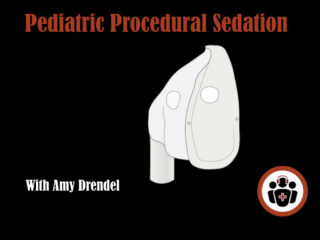Most Recent
WTBS 6 Measuring Quality – The Value of Health Care Metrics
A New York Times article titled “How Measurement Fails Doctors and Teachers” went viral on social media in January and caused a lot of chatter in medical circles. Its author, a professor of medicine at the University of California, gave voice to a wide sense of frustration, and while I understand that feeling and think it’s justified, I don’t agree with labelling measurement as the culprit. As I expressed in my first WTBS blog post, “Why Recording Time to Initial Assessment is Worthwhile,” I believe my job as an administrator is to make the job of my staff easier, and measurements can help us maintain standards of care and understand where gaps in the system may exist—when such data are collected and used appropriately. In this guest blog, Dr. Lucas Chartier, an emergency physician in Toronto with a background in quality improvement, expands on the subject of how we’ve gone off course in our zeal for measurement and helps us try to find the path back to our intended goals.
Best Case Ever 44 Low Risk Pulmonary Embolism
Dr. Salim Rezaie of R.E.B.E.L. EM tells his Best Case Ever of a Low Risk Pulmonary Embolism that begs us to consider a work-up and management plan that we might not otherwise consider. With new guidelines suggesting that subsegmental pulmonary embolism need not be treated with anticoagulants, exceptions to Well's Score and PERC rule to help guide work-ups, the adaptation of outpatient management of pulmonary embolism, and the option of NOACs for treatment, the management of pulmonary embolism in 2016 has evolved considerably. In which situations would you treat subsegmental pulmonary embolism? How comfortable are you sending patients home with pulmonary embolism? How does the patient's values play into these decisions? Listen to Dr. Rezaie provide an insightlful perspective on these important issues and much more...
Episode 76 Pediatric Procedural Sedation
In this EM Cases episode on Pediatric Procedural Sedation with Dr. Amy Drendel, a world leader in pediatric pain management and procedural sedation research, we discuss how best to manage pain and anxiety in three situations in the ED: the child with a painful fracture, the child who requires imaging in the radiology department and the child who requires a lumbar puncture. Without a solid understanding and knowledge of the various options available to you for high quality procedural sedation, you inevitably get left with a screaming suffering child, upset and angry parents and endless frustration doe you. It can make or break an ED shift. With finesse and expertise, Dr. Drendel answers such questions as: What are the risk factors for a failed Pediatric Procedural Sedation? Why is IV Ketamine preferred over IM Ketamine? In what situations is Nitrous Oxide an ideal sedative? How long does a child need to be observed in the ED after Procedural Sedation? Do children need to have fasted before procedural sedation? What is the anxiolytic of choice for children requiring a CT scan? and many more...
CritCases 1: Massive TCA Overdose
Welcome to the new EM Cases CritCases blog, a collaboration between Mike Betzner, the STARS air ambulance service and EM Cases' Michael Misch and Anton Helman! These are educational cases with multiple decision points where there is no strong evidence to guide us. Various strategies and opinions from providers around the world are coalesced and presented to you in an engaging format. Enjoy!
Best Case Ever 43 Ruptured AAA
I caught up with Dr. Anand Swaminathan, otherwise known as EM Swami, at The Teaching Course in NYC where he told his Best Case Ever from Janus General of his heroic and collaborative attempts at saving the life of a gentleman who presented to the ED with a classic story for a ruptured AAA. As William Olser famously said, "There is no disease more conducive to clinical humility than aneurysm of the aorta."
Episode 75 Decision Making in EM – Cognitive Debiasing, Situational Awareness & Preferred Error
While knowledge acquisition is vital to developing your clinical skills as an EM provider, using that knowledge effectively for decision making in EM requires a whole other set of skills. In this EM Cases episode on Decision Making in EM Part 2 - Cognitive Debiasing, Situational Awareness & Preferred Error, we explore some of the concepts introduced in Episode 11 on Cognitive Decision Making like cognitive debiasing strategies, and some of the concepts introduced in Episode 62 Diagnostic Decision Making Part 1 like risk tolerance, with the goal of helping you gain insight into how we think and when to take action so you can ultimately take better care of your patients. Walter Himmel, Chris Hicks and David Dushenski answer questions such as: How do expert clinicians blend Type 1 and Type 2 thinking to make decisions? How do expert clinicians use their mistakes and reflect on their experience to improve their decision making skills? How can we mitigate the detrimental effects of affective bias, high decision density and decision fatigue that are so abundant in the ED? How can we use mental rehearsal to not only improve our procedural skills but also our team-based resuscitation skills? How can we improve our situational awareness to make our clinical assessments more robust? How can anticipatory guidance improve the care of your non-critical patients as well as the flow of a resuscitation? How can understanding the concept of preferred error help us make critical time-sensitive decisions? and many more important decision making in EM nuggets...







